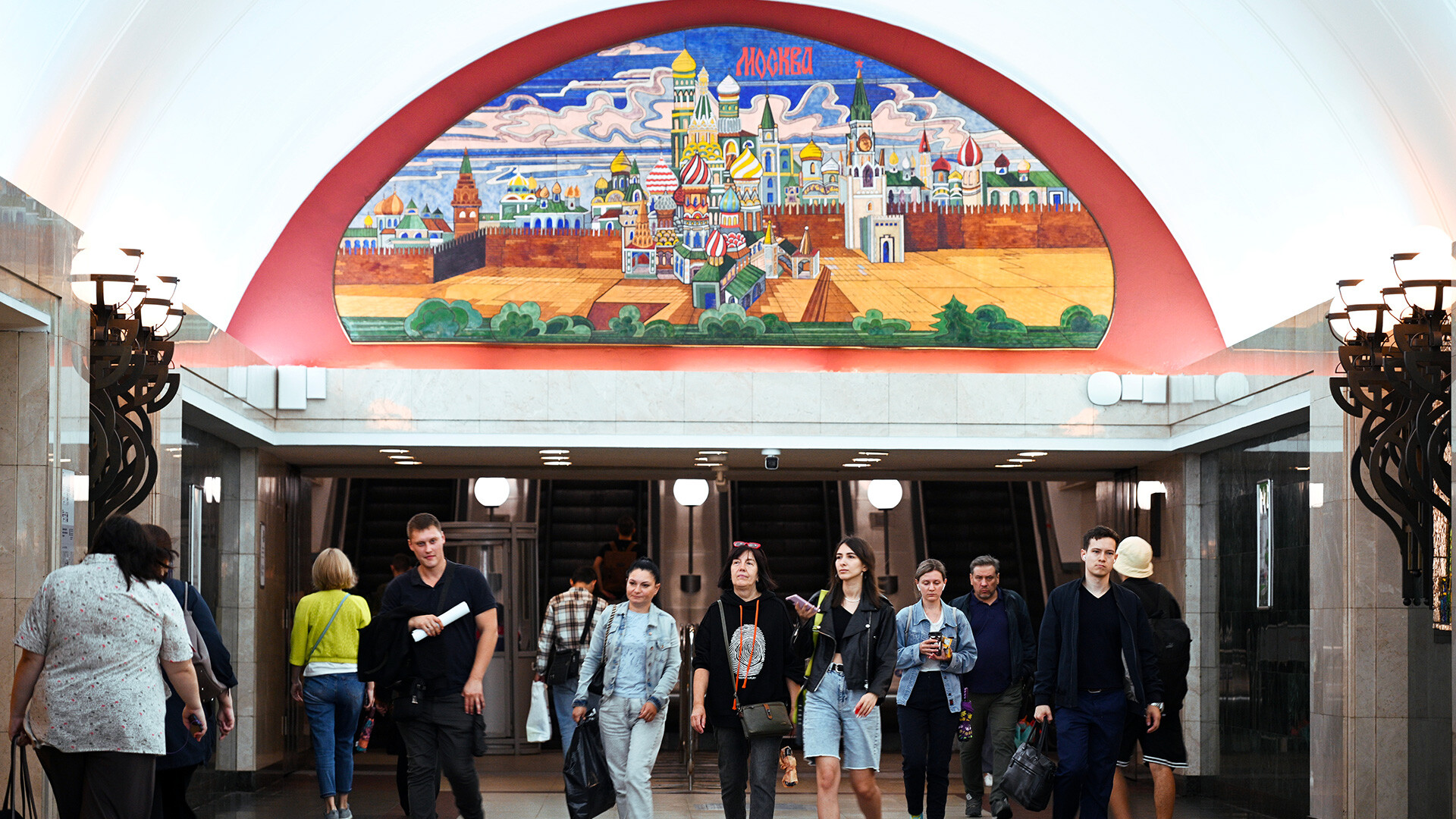
Trubnaya station of Moscow Metro
Alexei Filippov/SputnikMosaic plafonds on the ceiling of the Komsomolskaya metro station on the brown Ring line were made in 1951-1952 by artist and former iconographer Pavel Korin. Eight panels with patriotic narratives depicted Russian heroes and the feats of our people from different ages. These pictures include an abundance of gilded smalt, which makes them similar to Byzantine temple mosaics.
One of the plafonds depicts Alexander Nevsky under a banner with the visage of Christ; in the background, you can see the Cathedral of St. Sophia of Novgorod.
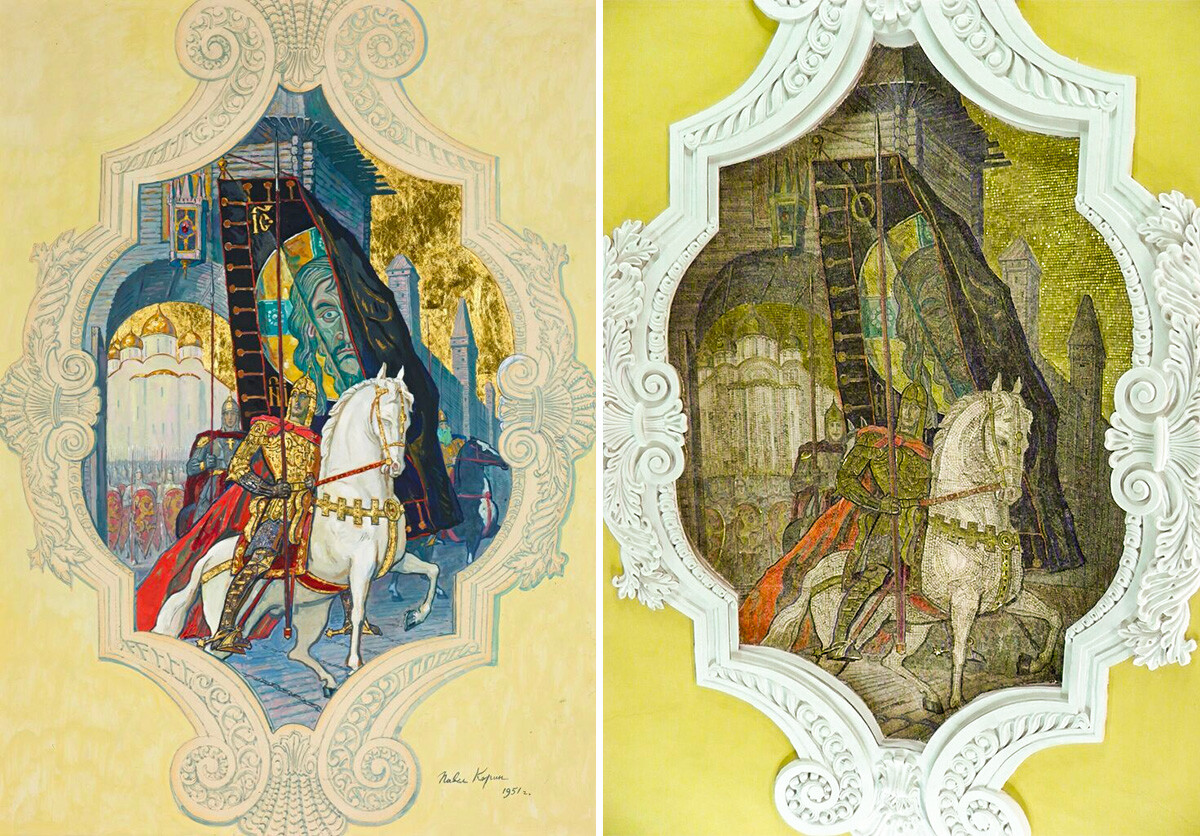
A sketch of the mosaic at Komsomolskaya station and the mosaic itself with a depiction of Alexander Nevsky
Tretyakov Gallery; Gzen92 (CC BY-SA)Another plafond was dedicated to Dmitry Donskoy: The Russian prince is depicted on a horse before the Battle of Kulikovo with a heraldic flag with the visage of Christ.
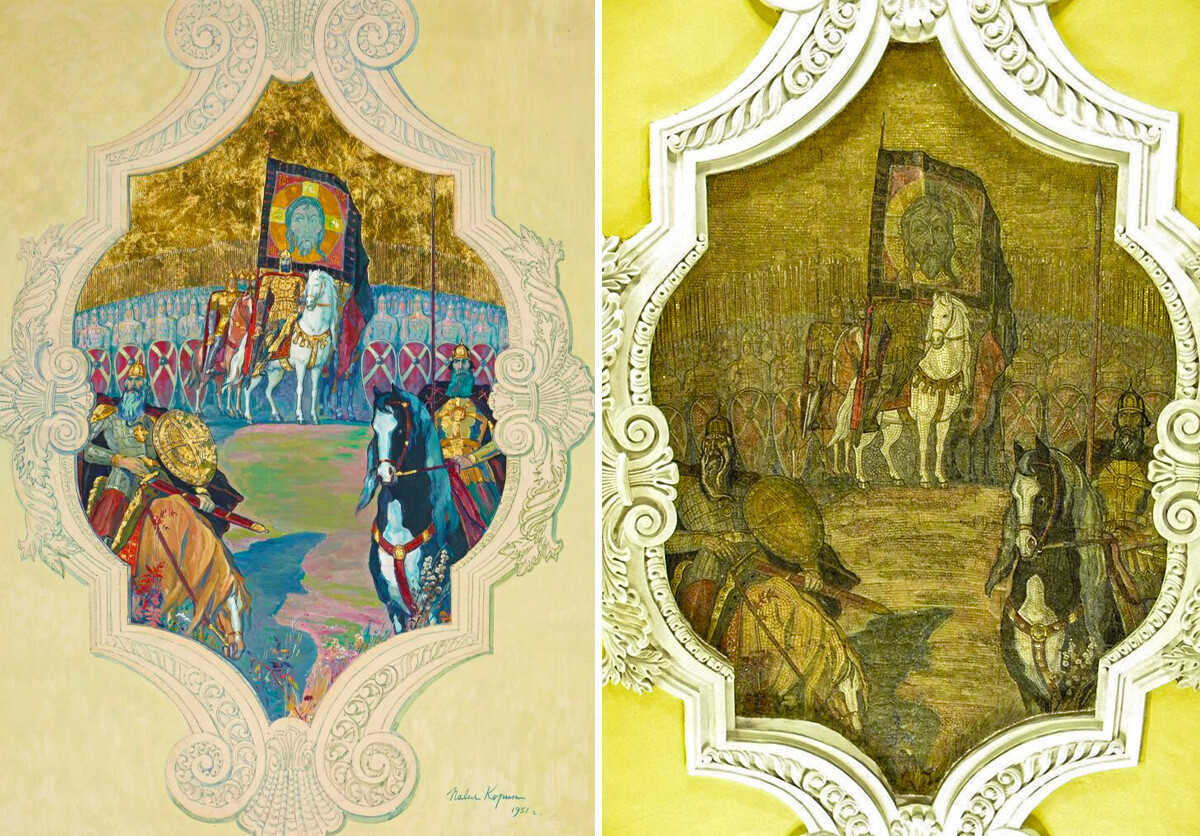
A sketch of the mosaic at Komsomolskaya station and the mosaic itself with a depiction of Dmitry Donskoy
Tretyakov Gallery; Tothkaroj (CC BY-SA)The liberators of Moscow in 1612 – Minin and Pozharsky – are also depicted with the visage of Christ against the background of St. Basil’s Cathedral and the walls of the Moscow Kremlin.
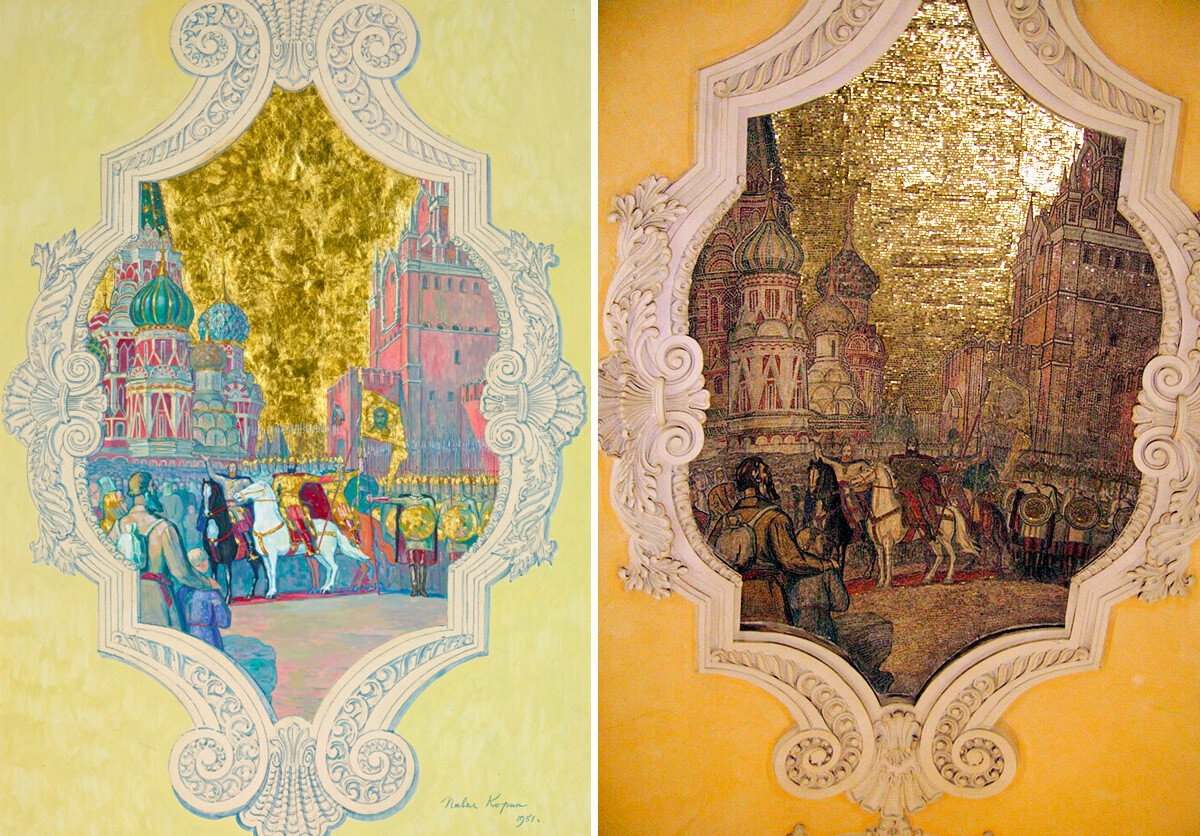
The sketch and the mosaic with Minin & Pozharsky
Tretyakov Gallery; steve_w (CC BY-SA)All of these mosaics were illustrations to the speech of Joseph Stalin at the parade on November 7, 1941: “Let the manly images of our great ancestors – Alexander Nevsky, Dmitry Donskoy, Kuzma Minin, Dmitry Pozharsky, Alexander Suvorov and Mikhail Kutuzov – inspire you in this war! May the victorious banner of the great Lenin be your lodestar!”
And the mosaic, in which the Red Army soldiers are holding the Red Banner with Lenin’s portrait, surprisingly resonates with the old Russian narratives.
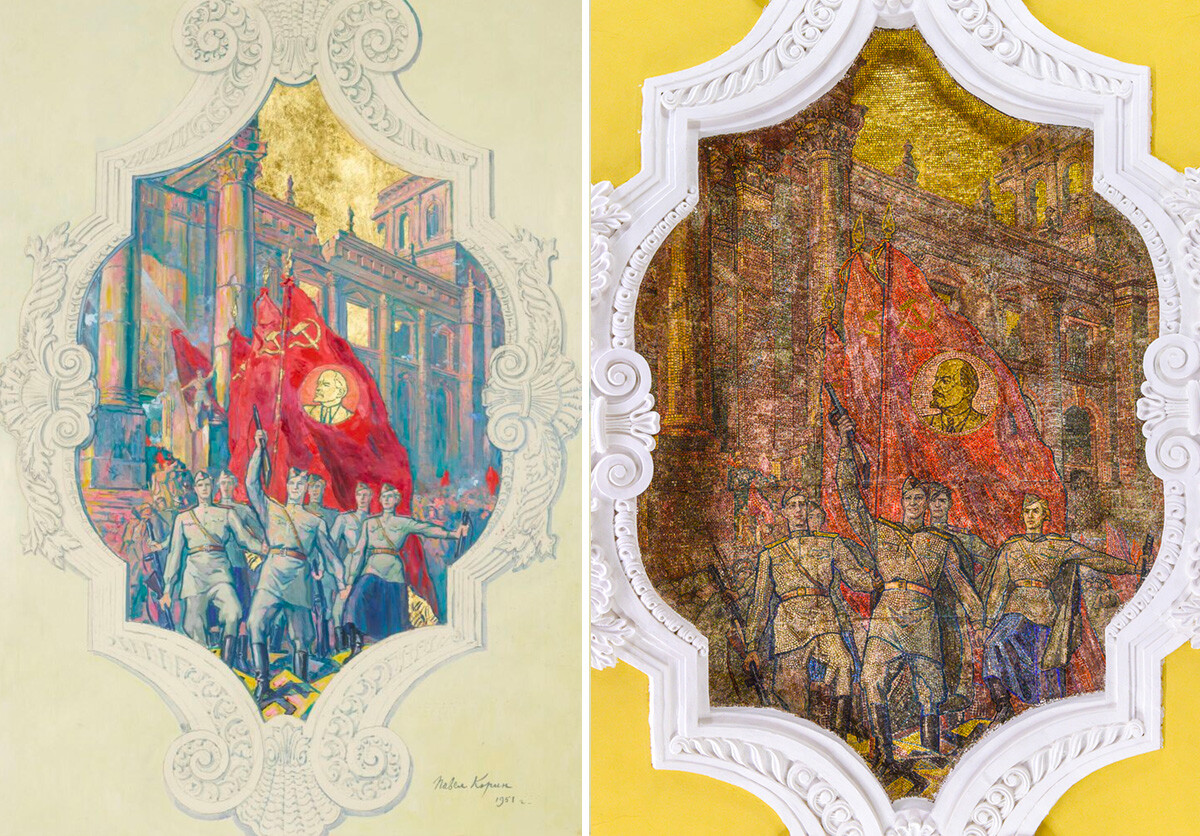
The sketch and the mosaic ‘Red Army soldiers with the Red Banner’
Tretyakov Gallery; Nikolai Galkin/TASSThese mosaics also reflect a change of attitude towards the Church that happened during World War II. In 1943, Stalin, in essence, rehabilitated the Russian Orthodox Church, met its main hierarchs and allowed the clergy to perform holy services and bless soldiers before battles. Most likely, he believed that secretly religious Soviet citizens (and soldiers) would be inspired by the support of the Church in the time of war.
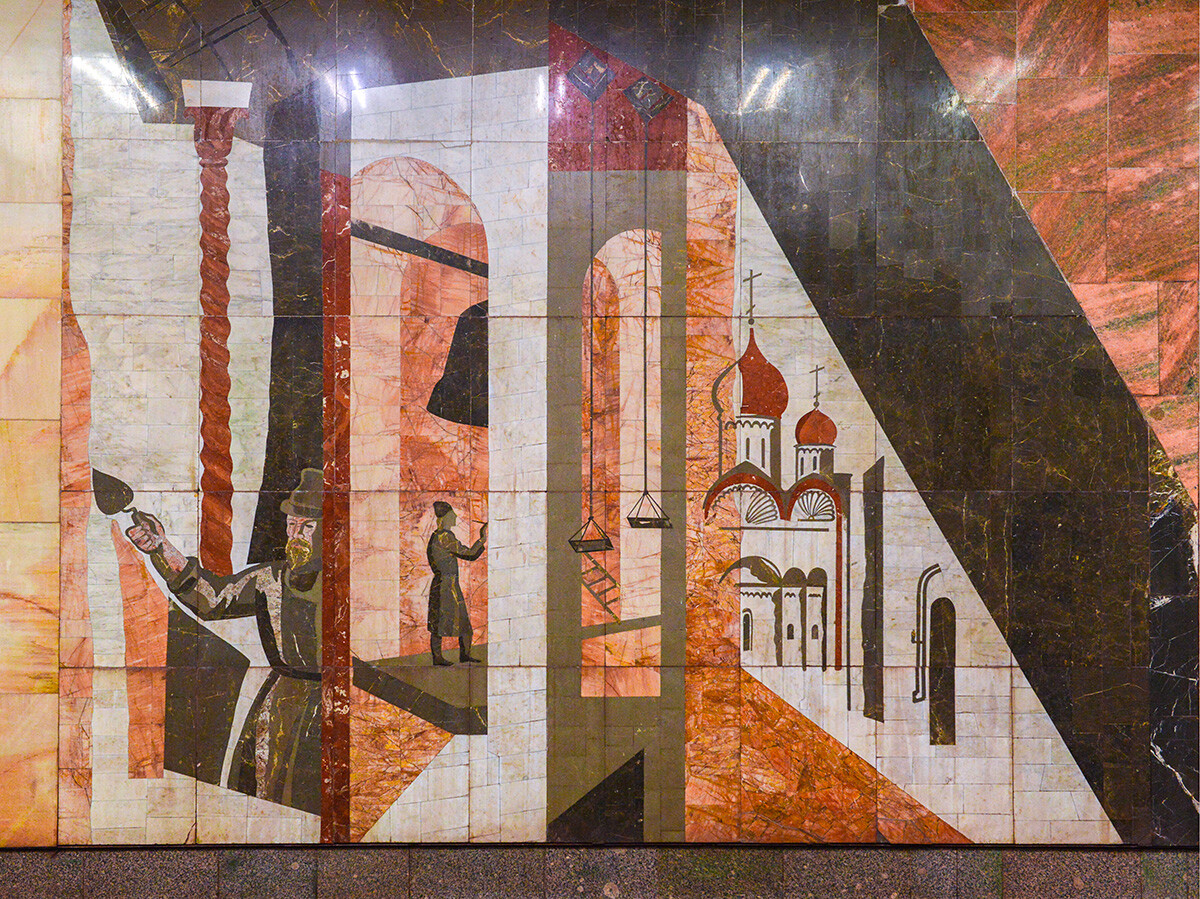
The mosaic with the Cathedral of the Archangel of the Moscow Kremlin
Nikolai Galkin/TASSThe walls of this station, which was opened in 1983, are decorated with mosaics with the theme of old Russian architecture. According to the idea of Leonid Pavlov, the station’s architect, the passengers were supposed to admire the artworks while they were waiting for the next train.
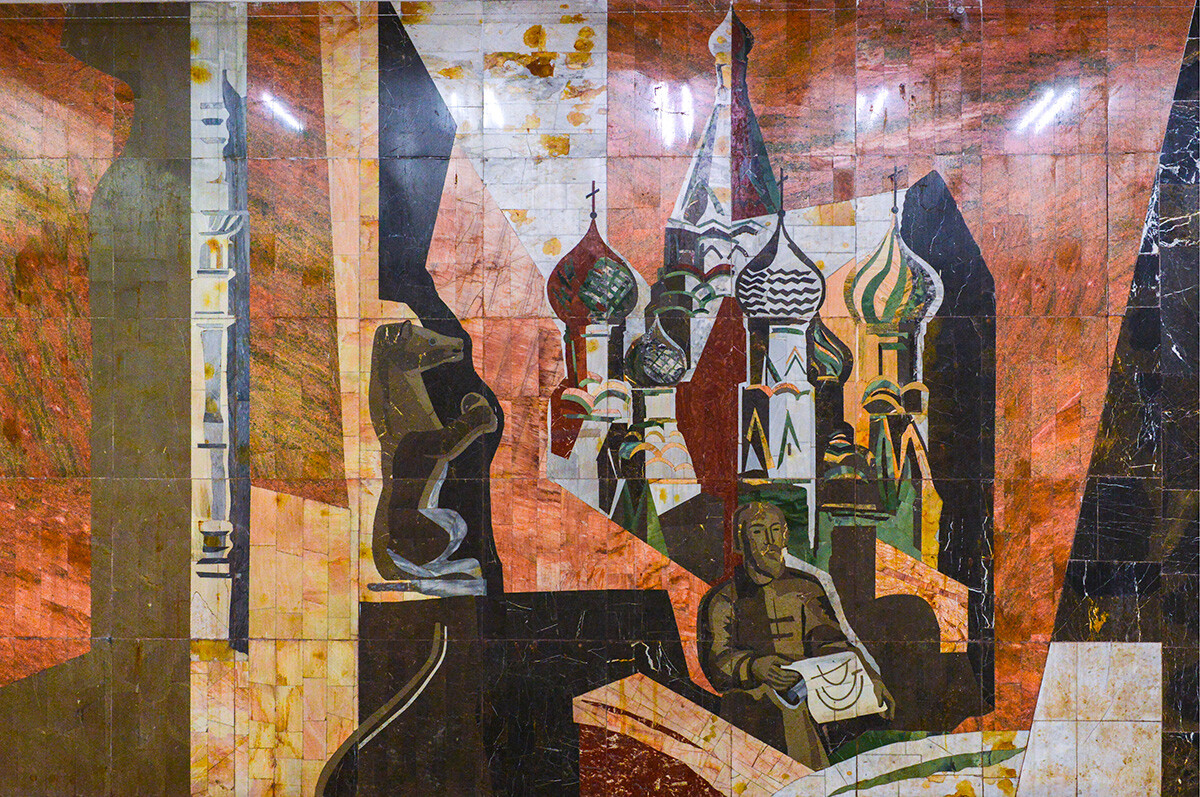
The mosaic with St. Basil's Cathedral
Nikolai Galkin/TASSThe mosaics were done by Eleonora Zharenova and Vladimir Vasiltsov; in them, you can see the construction of St. Basil’s Cathedral and the Moscow Kremlin cathedrals.

Borovitskaya metro station, which was opened in 1986, was named in honor of the Moscow Kremlin tower of the same name, which is located nearby. The wall of the central hall features the monumental ceramic panel titled ‘The Tree of Soviet Nations’ by Ivan Nikolaev, which depicts the Moscow Kremlin with its cathedrals, out of which grows the union tree of friendship in the shape of a map of the USSR.
The Rimskaya metro station of the Moscow Metro was opened in 1995. Ruminating on the topic of the eternal city of Rome, famous sculptor Leonid Berlin created a sculptural composition for the station with baby Romulus and Remus, the legendary founders of Rome, as well as with the Capitoline Wolf that suckled them.
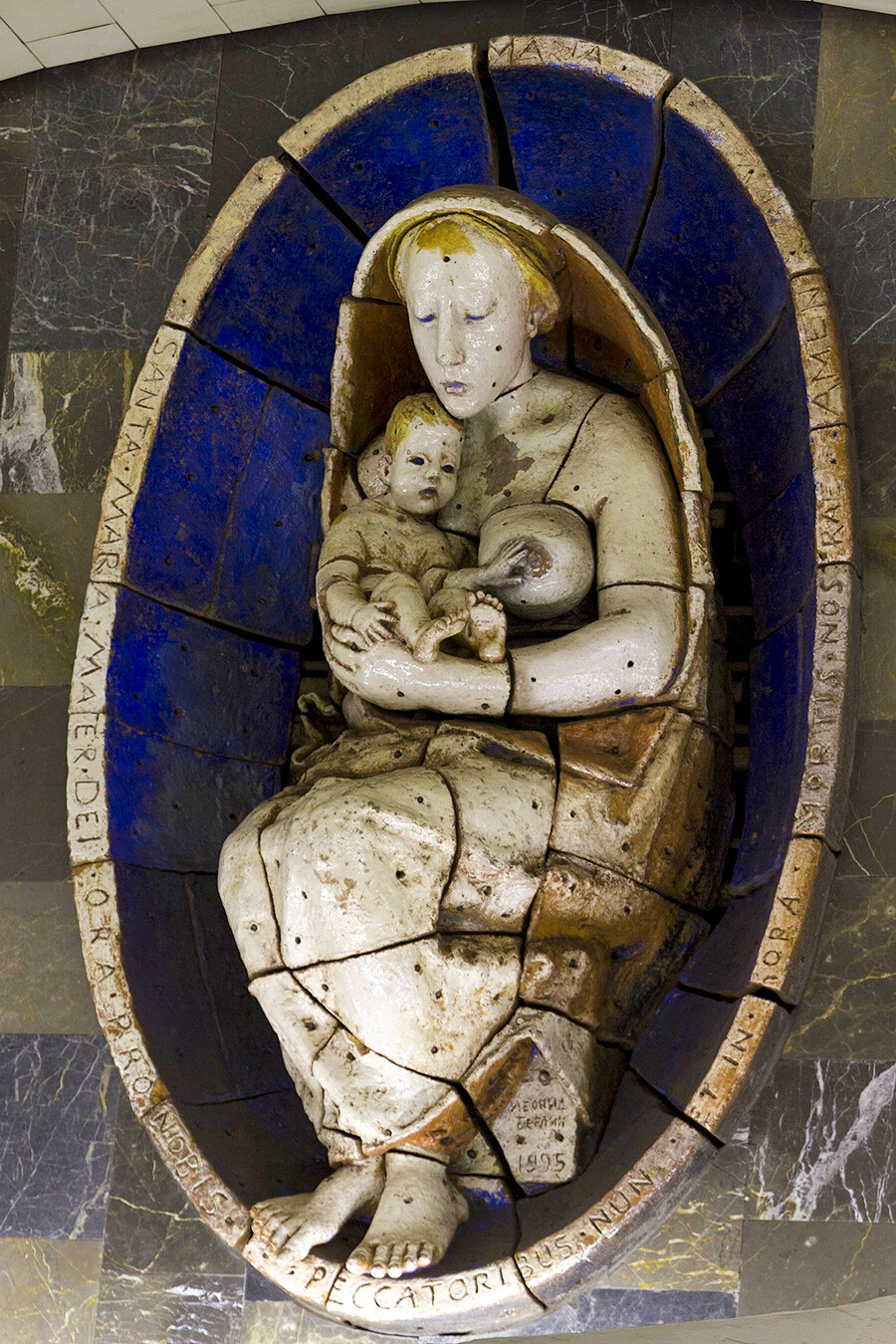
On the other side of the station, above the escalator and the passage to Ploshchad Ilicha station (the name of which refers to Vladimir Lenin), Madonna with Child is bizarrely situated – also a work of Berlin.
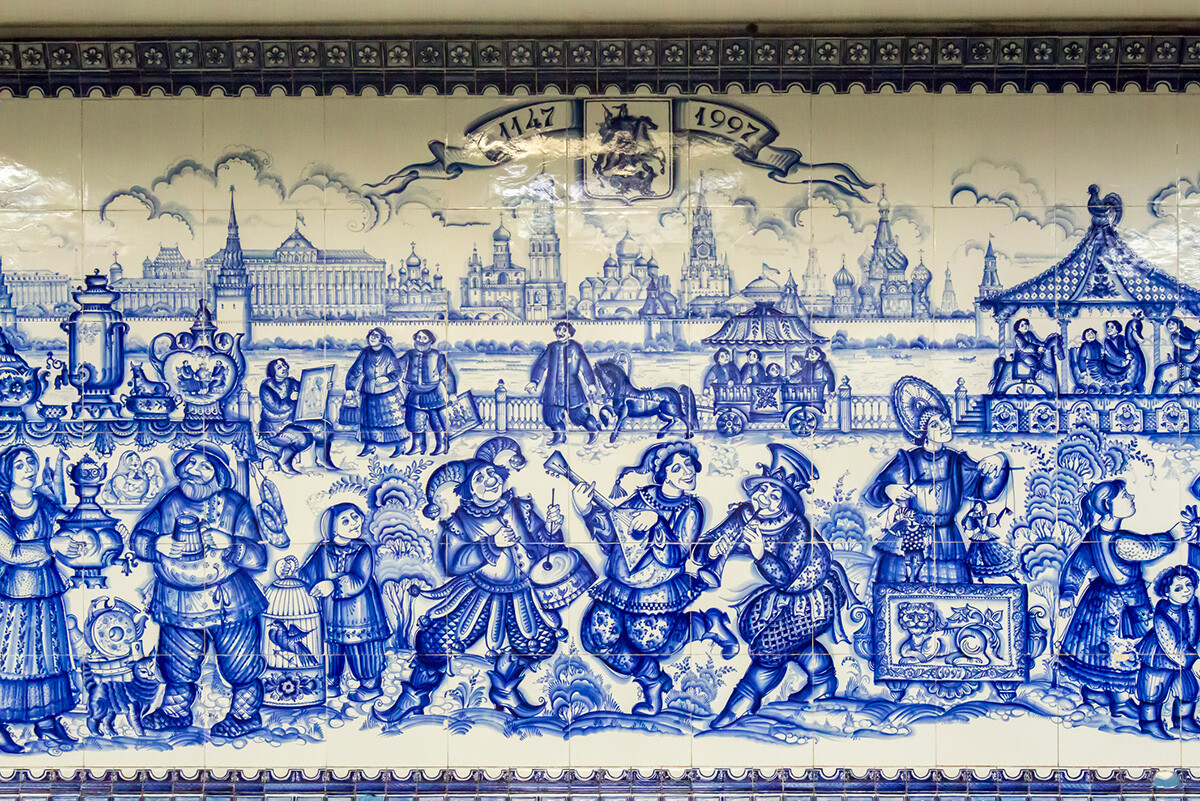
For the 850 anniversary in 1997, a large maiolica panel appeared at VDNKh station in the Russian Gzhel style. ‘A Fair in Zamoskvorechye’ was made by the artists who specialized in Gzhel painting – Margarita Podgornaya and Alexander Tsaregorodtsev.
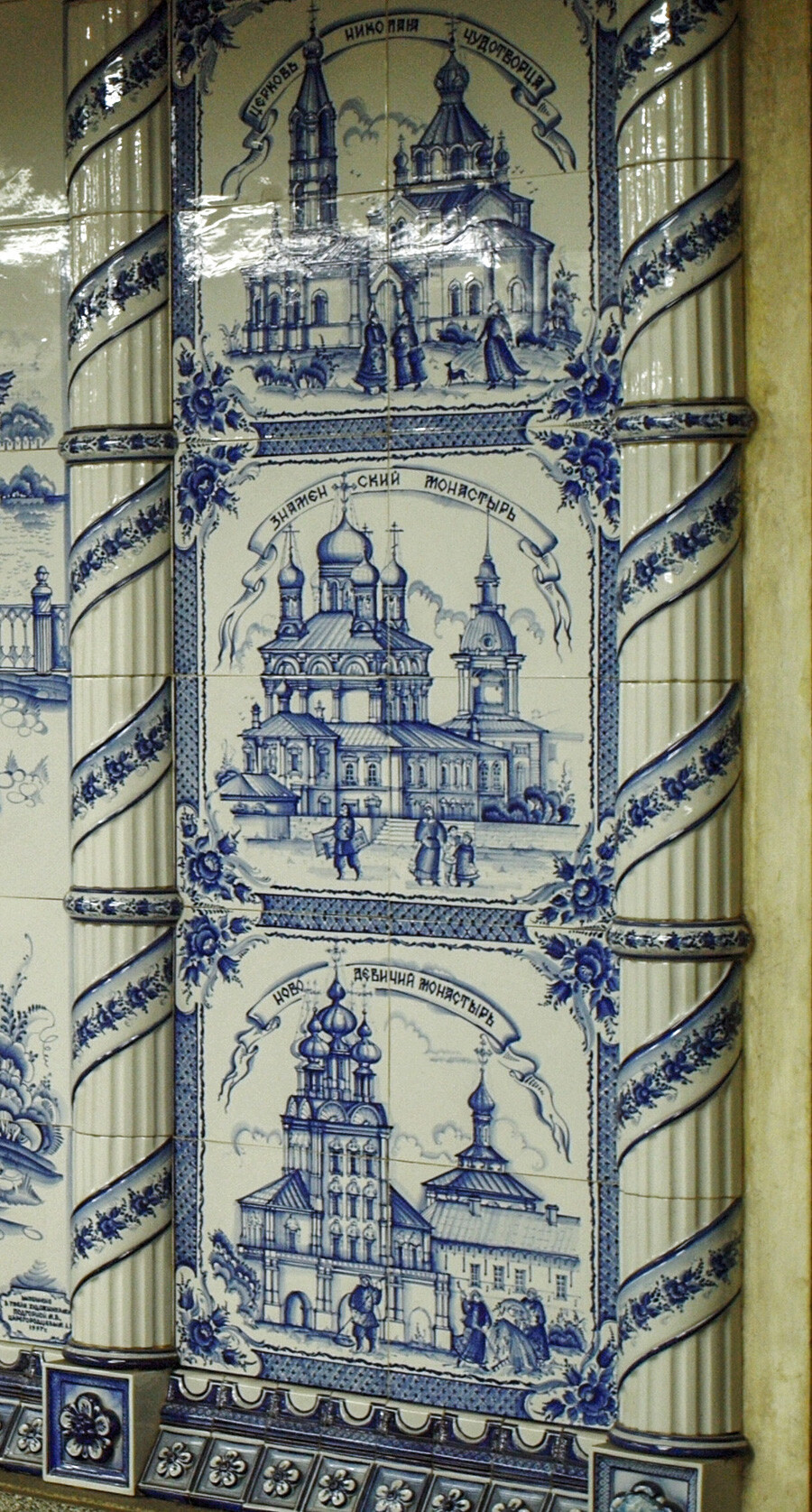
In the middle, fair folk festivities are depicted against the background of the Moskva River and the Moscow Kremlin; the edges of the panel feature tiles with Moscow cathedrals: the Cathedral of Christ the Savior, the Novodevichy Convent, the lost Church of Praise to the Virgin Mary and Church of Adrian and Natalia, among others.
Trubnaya station was opened in 2007; its walls are decorated with illuminated stained glass made by Zurab Tsereteli depicting ancient cities and villages of Russia. Its focal points are the recognizable cathedrals of Russia. For example, Kizhi.
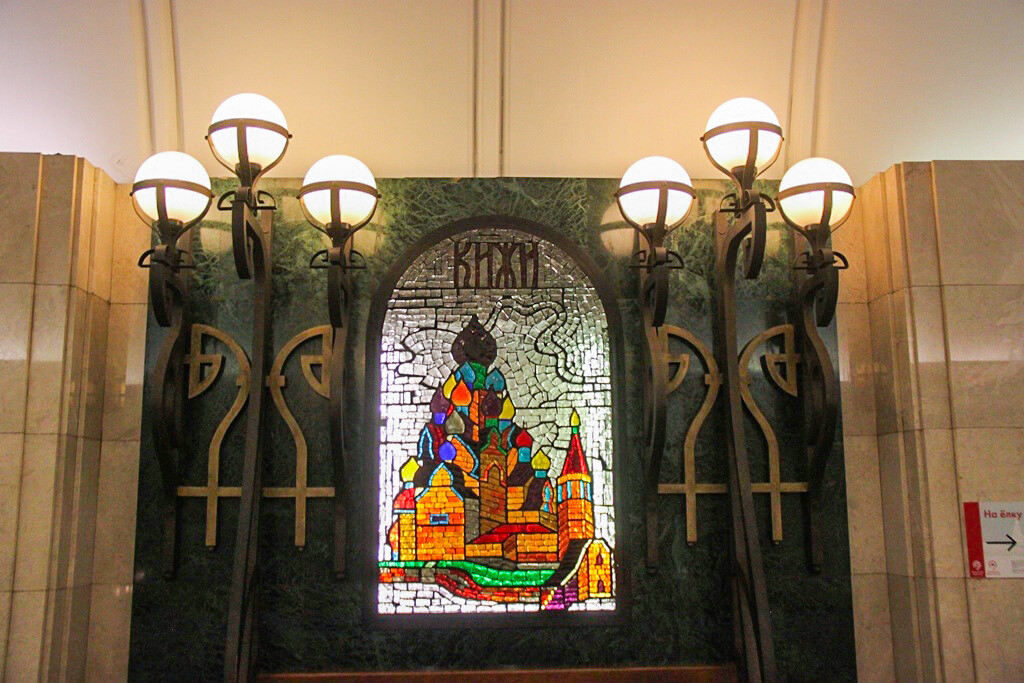
Moscow’s St. Basil’s Cathedral.
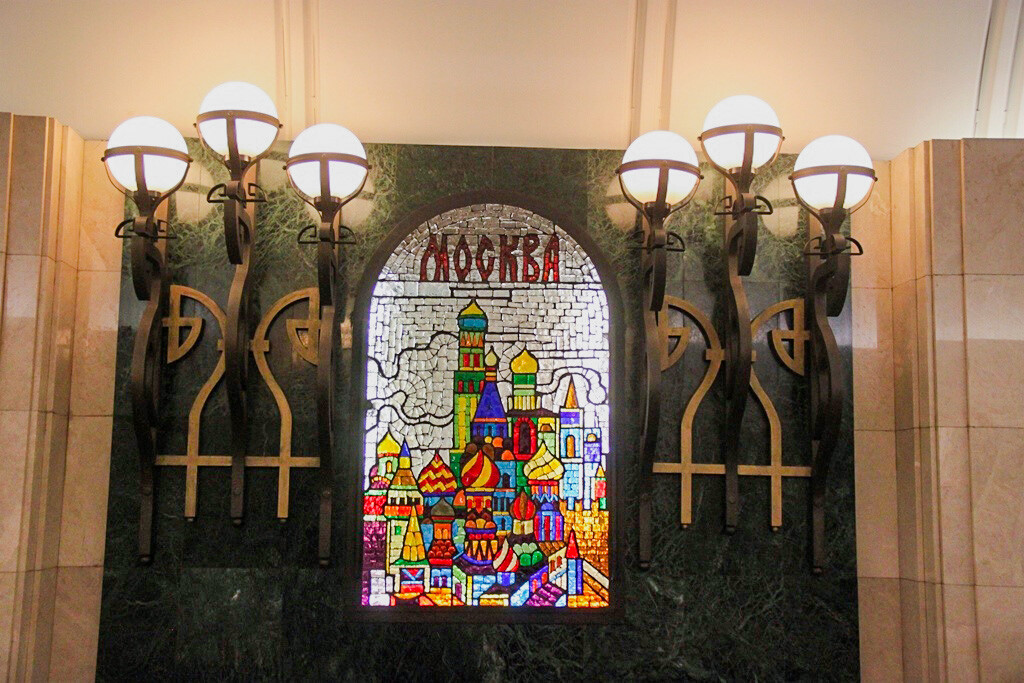
The most ancient stone tented roof church in Moscow’s Kolomenskoye Park…

…As well as the churches of Yaroslavl, Pereslavl-Zalessky and several more villages and cities.
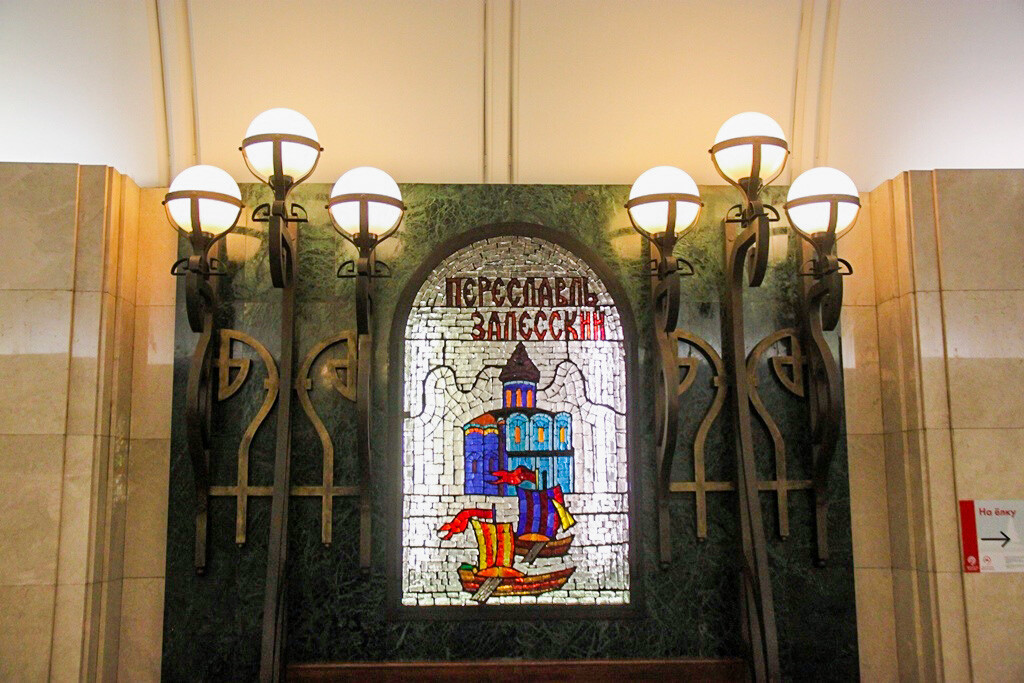
Sretensky Bulvar station was also opened in 2007. Steel plates with depictions were installed onto light marble-tiled walls. One can recognize the views of the Boulevard Ring in these multifaceted panel artworks by artist Ivan Lubennikov. One of them depicts the monument to Nikolai Gogol, through which you can see the outlines of the Church of St. John the Theologian on Bronnaya Street.
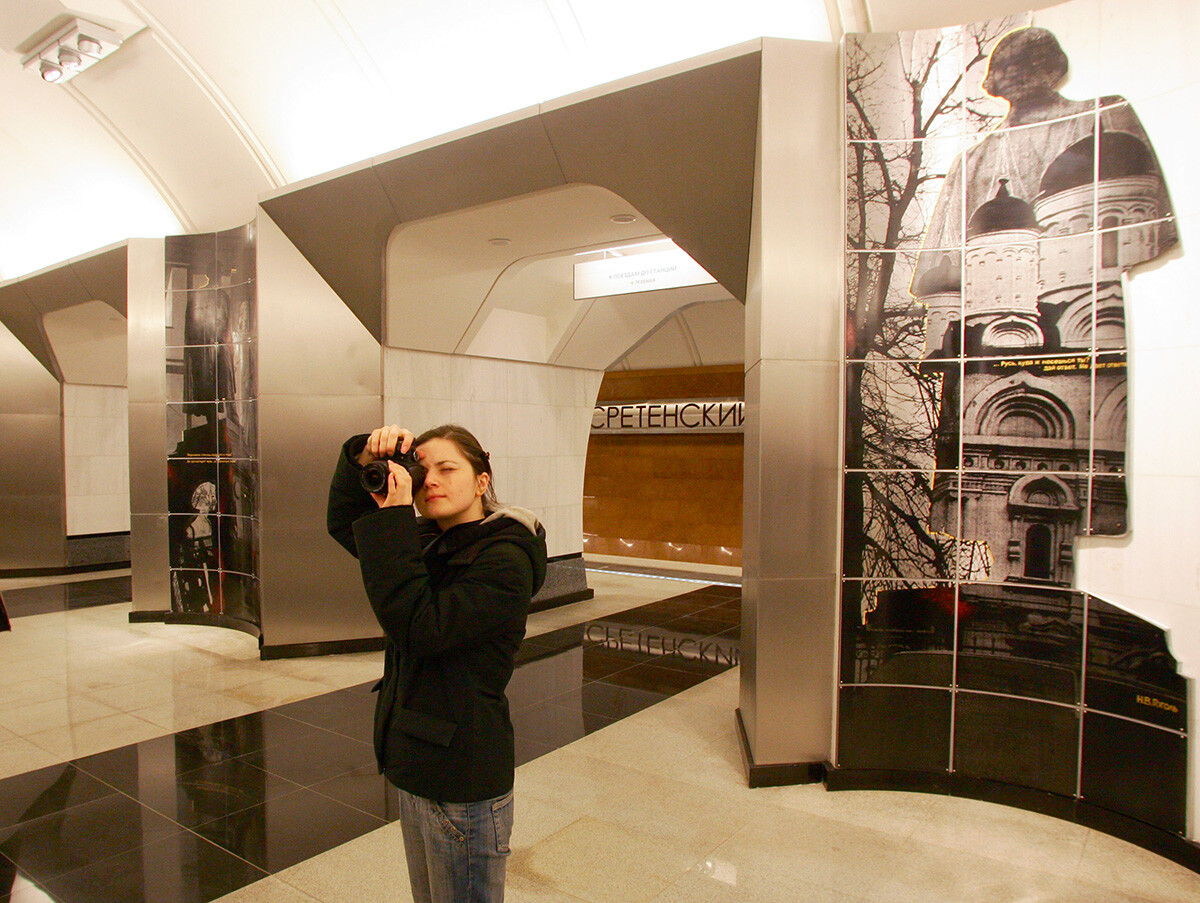
The other panel depicts the bell tower of Vysokopetrovsky Monastery.
Dostoevskaya metro station was opened in 2010, dedicated to the great Russian author Fedor Dostoevsky. The walls of the station are decorated with illustrations from the writer’s main novels. The monumental mosaics even caused a scandal – the public believed them to be too grim. But, the author, artist Ivan Nikolaev, insisted that one has to consider Dostoevsky according to “the depth and the tragedy of his creative work”.
The writer was very religious and the topics of faith and Christ appear in his works many times. For example, in the illustration for his novel ‘Crime and Punishment’, the central spot is taken by the figure of the Savior, a resurrecting Lazarus. On the right, we see how Sonya Marmeladova reads the Gospel to Raskolnikov in prison. According to the narrative, faith opens new life for the desperate hero.
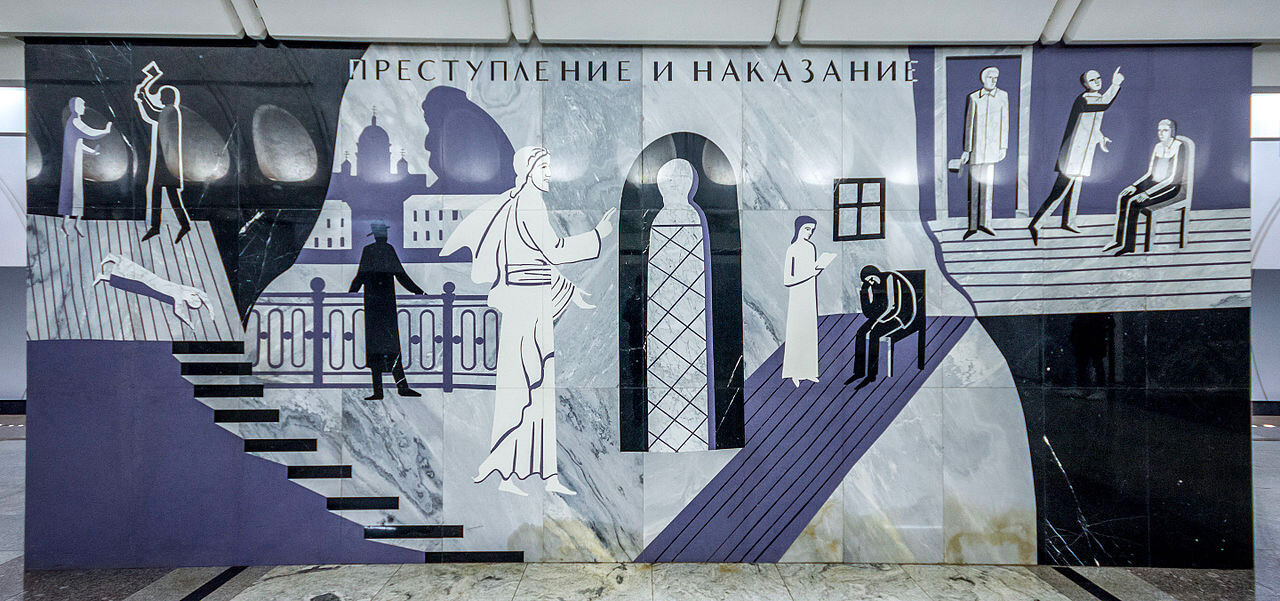
The illustration for ‘Crime and Punishment’
Antares 610 (CC BY-SA)Jesus also appears in the illustration for ‘Brothers Karamazov’. A small image in the left corner of the mosaic refers to the great inquisitor parable from the novel. This is a legend about how, in the Middle Ages, in the times of the Inquisition and of burning heretics on pyres, Jesus came to an inquisitor and they held a dialogue about freedom, faith and man.
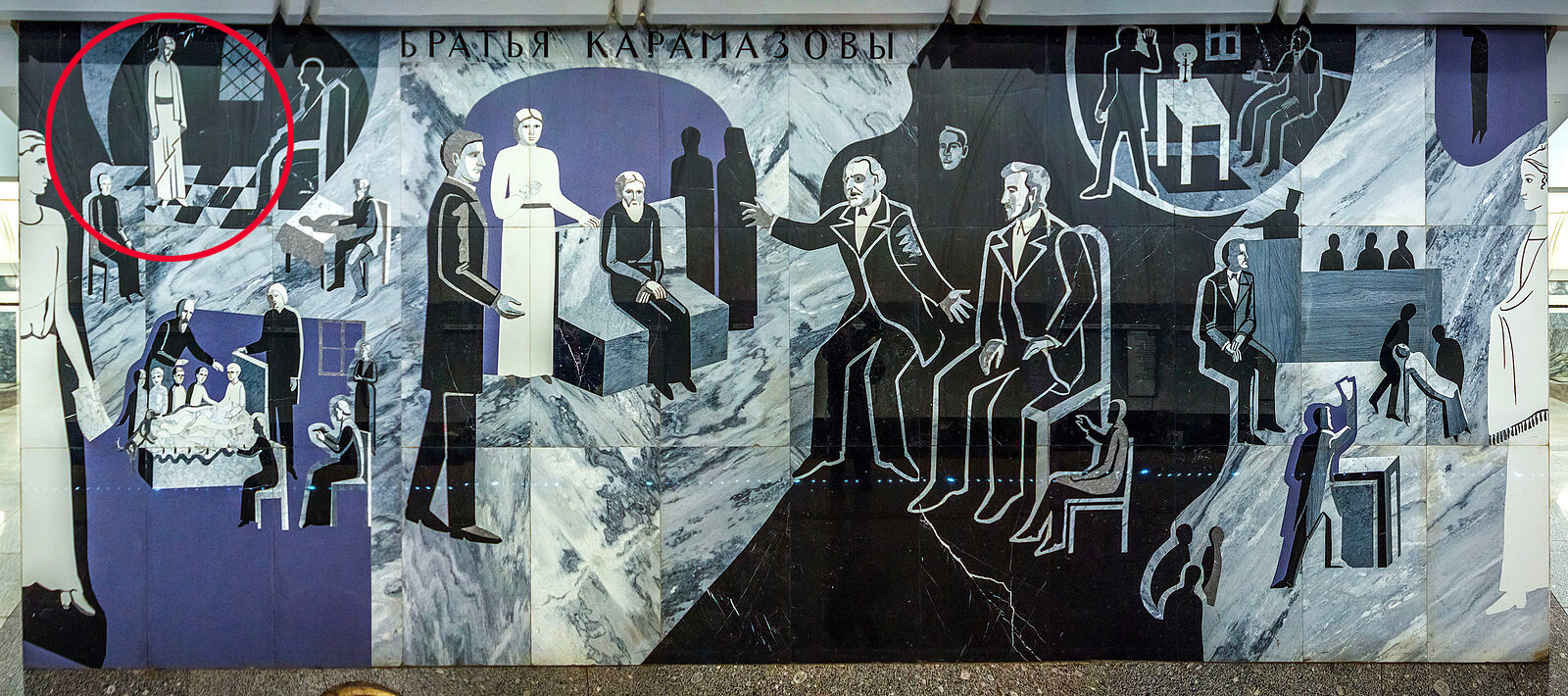
The illustration for ‘Brothers Karamazov’
Antares 610 (CC BY-SA)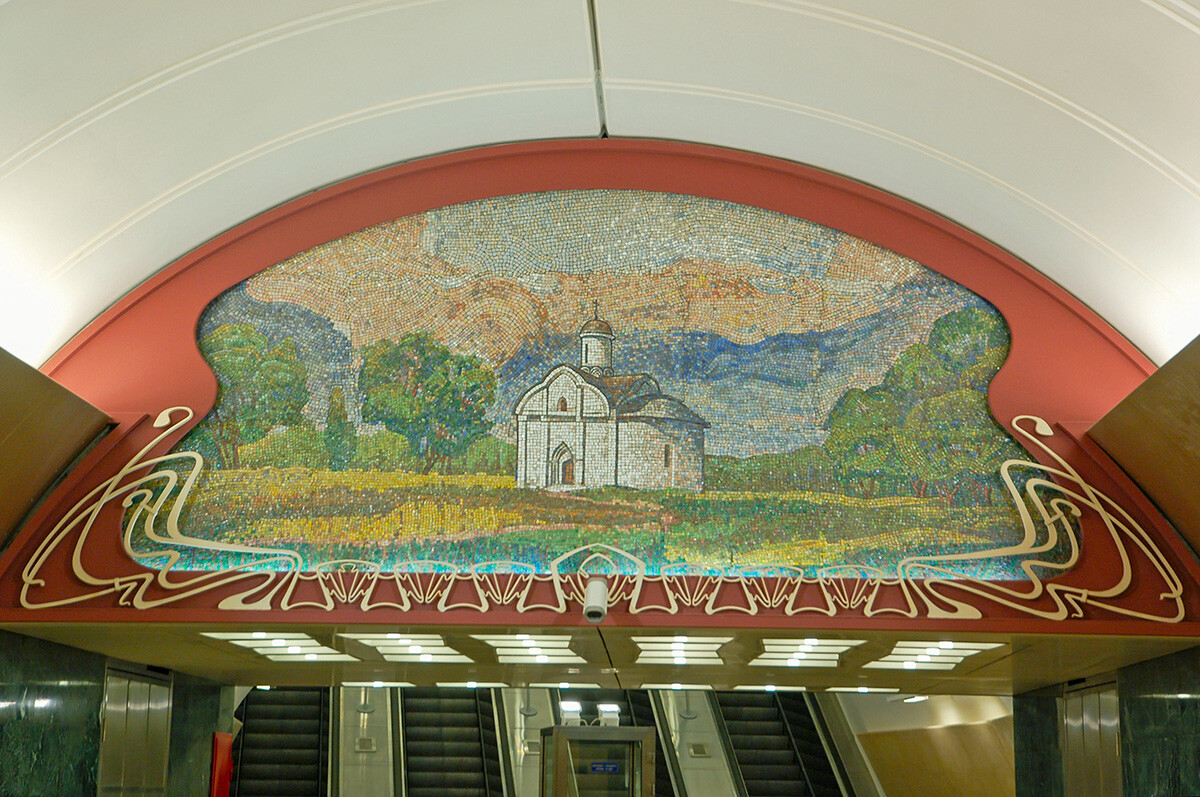
The Maryina Roshcha station, opened in 2010, is decorated with ten mosaic panels with views of historical places in Moscow – the Ostankino district, Maryina Roshcha itself and others.
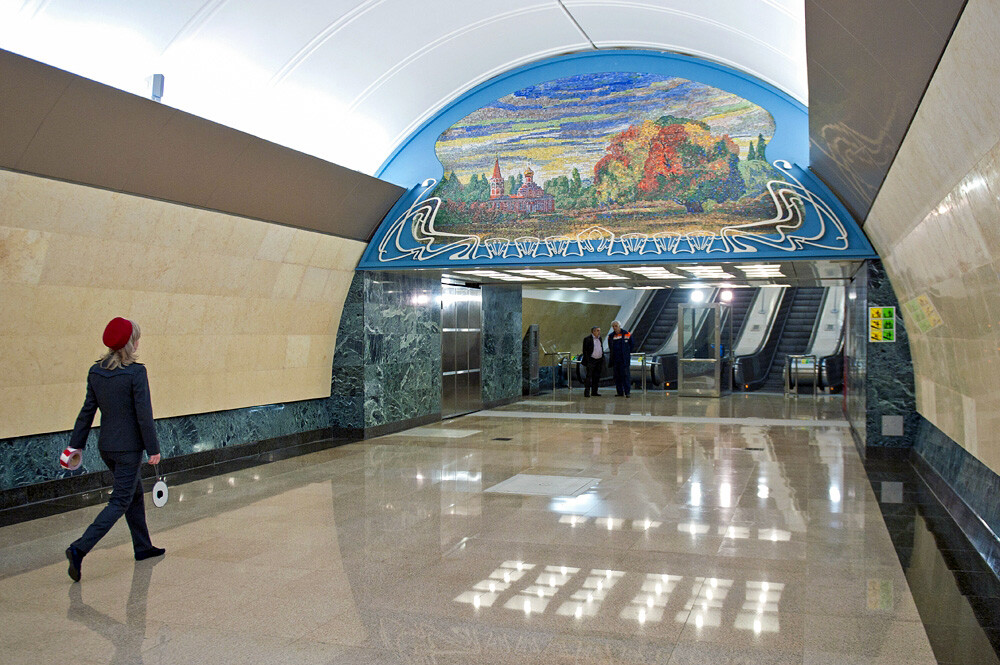
They were made by artist Sergey Goryaev from glass smalt; in the background of the landscapes, passengers can see the 15th century Tryphon’s Church in Naprudnoe, the 17th century Holy Trinity Church in Ostankino and the end of the 19th century – beginning of the 20th century Church of the Icon of Our Lady ‘Unexpected Joy’ in Maryina Roshcha.
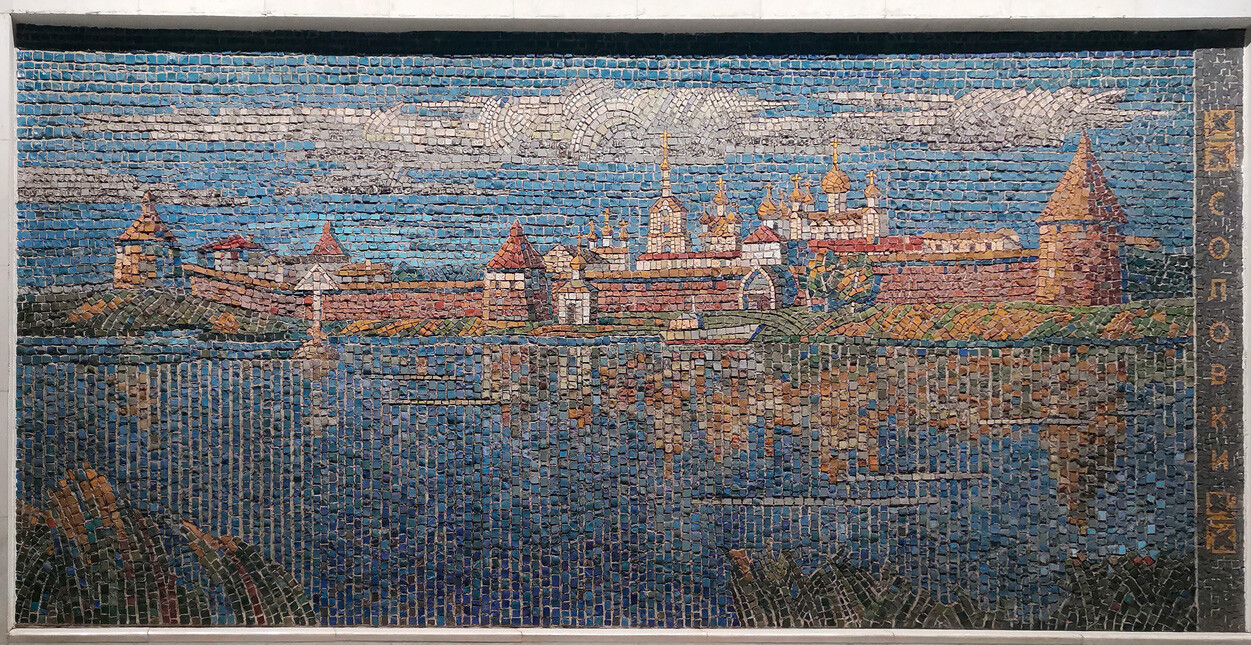
Solovetsky monastery
Nord794ub (CC BY-SA)Belomorskaya station, opened in 2018 in the north of Moscow, is decorated with mosaics with depictions of the Solovetsky Monastery (which is located, in fact, in the White Sea – ‘Beloye More’ in Russian), as well as other holy places of Northern Karelia: Valaam Monastery on Lake Ladoga and the Kizhi Pogost on Lake Onega.
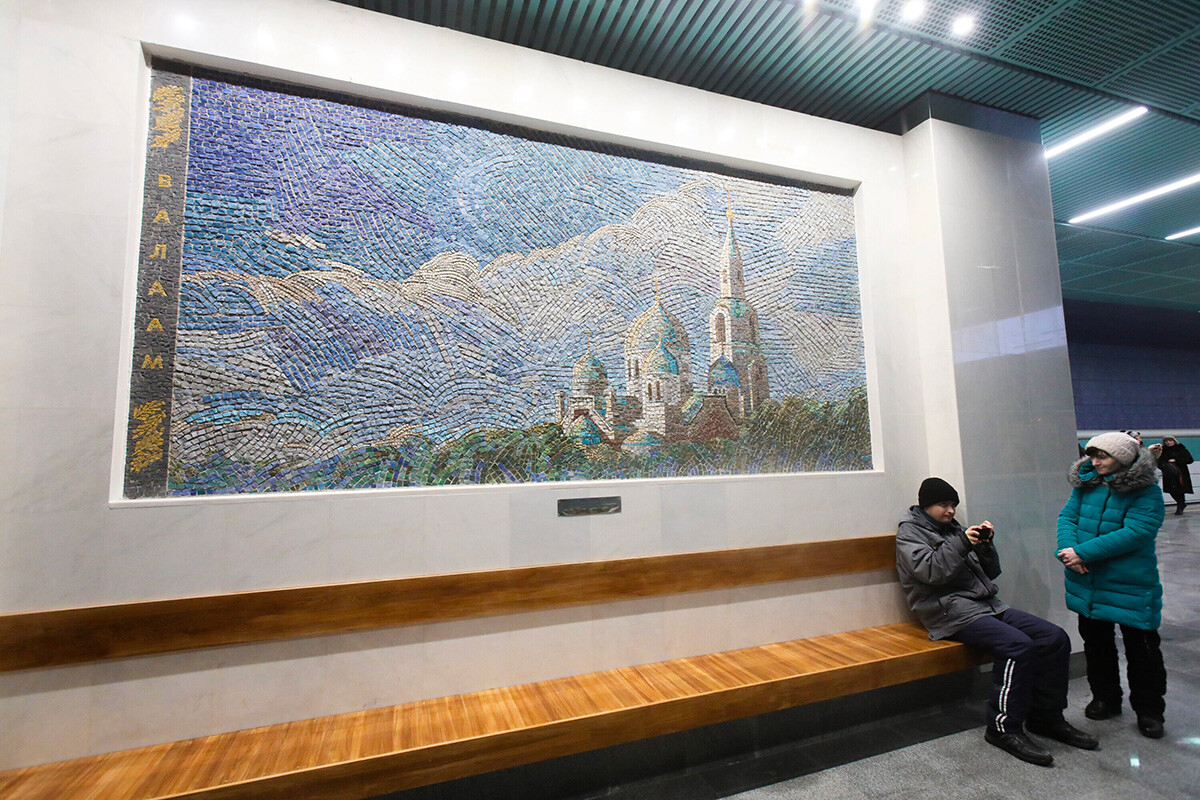
Valaam monastery
Andrei Nikerichev/Moskva AgencyDear readers,
Our website and social media accounts are under threat of being restricted or banned, due to the current circumstances. So, to keep up with our latest content, simply do the following:
If using any of Russia Beyond's content, partly or in full, always provide an active hyperlink to the original material.
Subscribe
to our newsletter!
Get the week's best stories straight to your inbox